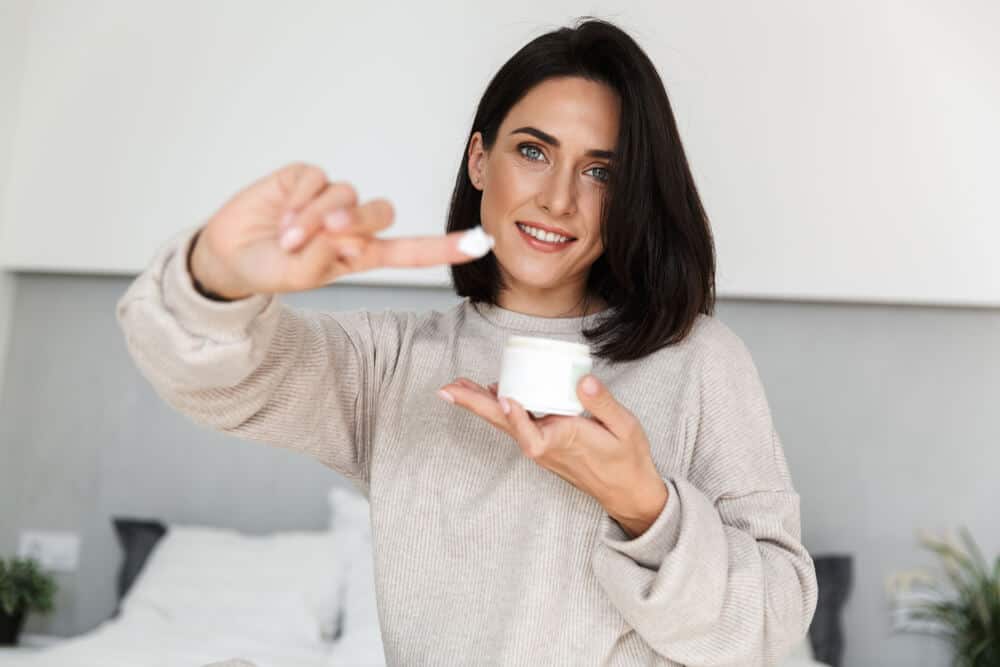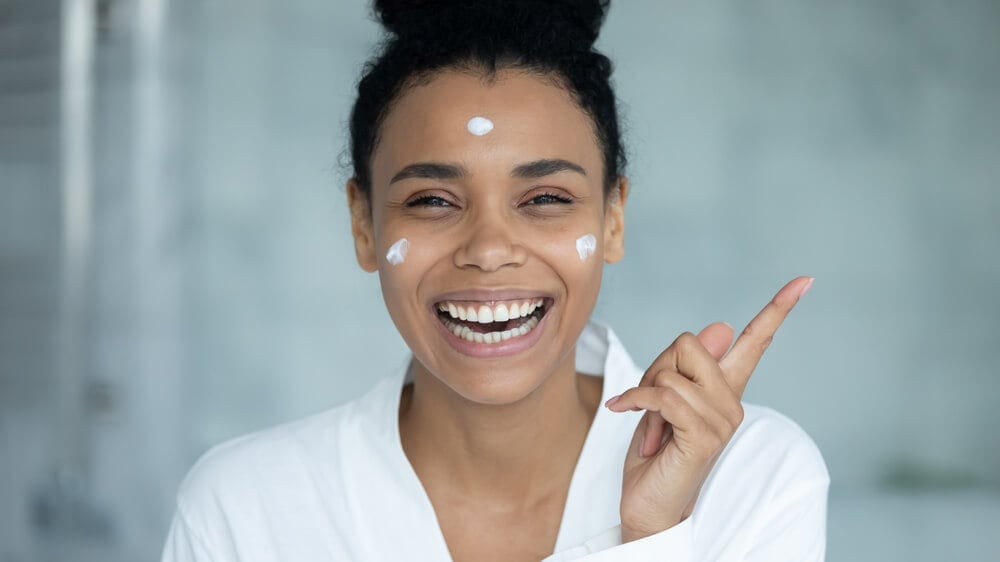Is Sunscreen Necessary in Winter?
Without a doubt, we all know the importance of wearing sunscreen in the summer months. Cloudless skies are overhead and the sun is shining down. It’s almost instinctive to slather it on and protect our skin when we feel the heat. In this article, we’ll try to answer the question: Do You Really Need to Wear Sunscreen in the Winter?
But, when temperatures drop and winter rolls around, do we really need to include this step in our skincare routine? Read on and discover the answer to that question and more and, trust us, your skin will be eternally grateful!
Do You Really Need to Wear Sunscreen in the Winter?

The short answer to the question, ‘Do I really need to wear sunscreen in the winter?’ is absolutely, yes!
That said, if you’re like us, you’ll want and need to understand why if you’re going to make the conscious effort of including it in your daily routine. That’s right, we’re talking even on the days you’re reaching for that parker coat and those winter boots.
Don’t worry, we’ll get into the specifics of how and why every skincare expert known to man recommends wearing SPF in winter. For now, let us just say, don’t be fooled by gray skies, rain, wind, and snow!
UVA and UVB rays can and will still reach your skin in winter. Damage can and will be caused and, just like in summer, the only way to prevent said damage is to protect your precious skin with SPF.
Therefore, the next time you have a winter sort out and pack away your dresses, sandals, and sun hats, leave the sunscreen where it is. Throw it in your makeup bag, put it in pride of place on your dresser. You can even leave it next to your toothbrush if that’s where you’re most likely to see it each morning.
Wherever you decide to keep it, just make sure you remember to apply it 365 days a year!
All of These Things Mean Winter SPF is a Must!
Now that you’ve understood there’s no escaping sunscreen application no matter what month it is, understandably, you’ll want to know why!
Well, that’s what we’re here for and we’re happy to say we have a laundry list of factors (pun intended) for you.
- Even the Clouds Can’t Keep Them Away
We’re talking about UVA and UVB rays of course. On those days where you check your weather app (or go old school and, you know, look outside!) and discover an overcast sky, you’re still at risk of skin damage from UV.
In fact, we bet you’ll be surprised to learn that up to 80% of UV rays can penetrate cloud coverage. Therefore, though the winter does offer a considerable amount of protection against sun exposure, those rays can still reach your skin and wreak havoc on your complexion and overall skin health.
- The Ozone Layer is Thinner in Winter
The Ozone layer, which absorbs harmful UV rays and works like Earth’s shield from the sun, actually becomes thinner in the winter. The colder the winter and the colder the stratospheric temperature, the larger the O-zone hole becomes.
Therefore, it’s highly important in these colder months to afford your skin that extra protection from harmful UV rays that the O-Zone layer can’t always provide!
- Snow Can Make UV Rays More Intense!
It might seem counterintuitive to be slathering on the SPF when there’s snow on the ground, however, that’s the very reason why you should!
Why? Snow can reflect UV rays!
That’s right, stepping outside for a winter stroll in a blanket of crisp white powder may feel like the furthest thing from summer sunshine. But, that snow you’re treading through will be reflecting those rays right onto your skin like nobody’s business.
That’s why, believe it or not, it’s actually possible to get a sunburn in sub-zero temperatures!

UVA and UVB Rays Explained
As we go through these tips and explanations for winter sunscreen wearing, you’ll see we mention UVA and UVB rays quite frequently. So, though you’ve likely heard of both of them before, here’s a quick explanation to understand the difference between them in case, like us, you’ve not always known the difference!
UVA
Firstly, UVA stands for Ultra Violet A. These are the ones that cause fast tanning and often sunburn. Resultantly, they’re the ones we need to be most cautious of! These rays have higher wavelengths and penetrate more deeply than UVB rays. This means they can affect and badly damage cells deeper within the skin than UVB can.
Another horrible thing these rays offer is the ability to prematurely age your skin. They cause a large majority of wrinkles and are also the cause of some skin cancers.
These rays are not absorbed by the O XZone layer either. This means that around 95% of the UV rays that reach us here on earth are UVA, the most damaging of the two.
They can also penetrate through windows and other glass, but more on that later!
UVB
Though UVB (Ultra Violet B) rays don’t penetrate the skin as deeply, they actually have higher energy levels. These rays will also cause damage to the outer layers of your skin and directly damage DNA.
Also, whilst UVB rays can also contribute to premature skin aging, they cause most skin cancers.
If all of that wasn’t enough, these harmful UVB’s lead to delayed sunburn. The only real plus is that these rays cannot penetrate through your windows and are often filtered out by clouds.
Take Extra Care During Winter Sports

Thought windburn was the only skin condition you’d be dealing with on your ski trip?
Think again!
As avid winter sports participants will know, a long day out in the snow or on the slopes can result in some pretty nasty skin conditions. Whether your suffering from wind chill or simply just noticing more and more dry skin from the cold, nobody wants that to deal with when trying to enjoy themselves.
As you may have already guessed, our suggestion to combat one of the worst side effects of all is to apply sunscreen. This is also one of the times we’d suggest a higher factor.
The reason for this is, UV radiation actually worsens the higher you are above sea level. Therefore, being at a higher altitude puts you more at risk of sunburn. Yes, even when it might be snowing outside. Not to mention outdoor sports are likely to result in your sunscreen coming off much quicker.
Finally, as we covered above, snow reflects UV rays and can easily intensify them this way. Make sure you’re well protected therefore by applying a high SPF to your skin every few hours. Additionally, don’t forget those ears, your nose, and your lips. Trust us, they’re the shoulders of the summer!
What Happens When You Don’t Wear Sunscreen in the Winter?
Though it’s really not something we want to think about, forgoing protection from the sun’s harmful UV rays can result in serious risk to your health. Of course, none of us want sunburn or visibly damaged skin, however, skin damage from UV rays can be much more than purely cosmetic.
As we touched on earlier, UV rays (mainly UVB) are responsible for most skin cancers. Overexposure to these rays over time, therefore, can increase the likelihood of this developing in the future.
The safest way forward?
Protect ourselves from this at all times, all year round.
That way we can move forward with beautiful complexions, and healthy skin!
How About Wearing Sunscreen Inside?

We know what you’re thinking, there’s no way we need to wear sunscreen if we’re not leaving the house, right? Wrong!
Even on those days you’re bundled up in a sweater and cuddled up on the sofa, if you have windows in your home, you should still be wearing sunscreen!
Why?
The answer’s simple…
As you may remember from our explanation of the difference between UVA and UVB rays, the more harmful of the two is capable of penetrating through glass windows. Unfortunately, that would be the UVA rays which make up 95% of UV as they aren’t filtered by clouds or the O Zone layer.
So, the next time you think about sitting by the window to read or to gaze longingly out at a frosty winter landscape, just be sure to pop on a little sunscreen for protection before you relax and enjoy it!
We should also mention that this is even more important during the summer months when the sun is at its highest and therefore strongest.
Do You Need to Wear More Sunscreen in the Summer?
Now, you may be thinking we’ll answer this question with a resounding, “Yes! Of course you do!” But, in actual fact, you don’t. Well, not all the time anyway.
Let us explain…
Though your skin is still at risk of UV damage in winter, there’s not quite as much exposure as there is in summer. During those warmer months, the sun is higher in the sky. Therefore, the sunlight, and resulting UV rays, that reach the surface are more concentrated.
In winter, however, the light is spread out over a bigger area as the sun is lower. This means we’ve less need for ultra-high SPF’s.
A moisturizer containing SPF should work perfectly for days spent inside or an hour or two outdoors. If you plan to participate in winter sports or know you’ll be outside for an extended time, SPF 30 or 50 is recommended.
Applying Sunscreen Once Won’t Be Enough For The Whole Day
Back to those summer sunscreen similarities! As in warm weather, simply applying your sunscreen once at the start of the day just won’t do. (That said, if that’s all you think is realistic for you, we’d rather you did that than nothing at all!)
If you really want to keep your skin fully protected, even in cold weather, you should aim to top up your sunscreen every few hours.
As before, we’re not suggesting you slather on the factor 50 every couple of hours as you should in the height of summer. In the winter, simple application of a moisturizer containing SPF or sunscreen of 30 SPF will protect you from those rays.
How to Introduce Sunscreen into Your Skincare Routine

That’s right, just when you thought your cold-weather skin care routine couldn’t possibly take any more steps, we’re here to add one more!
Why?
We’re betting you put the SPF to the back of the cabinet the moment fall arrived!
Well, if you’re nodding along right now, go and take it out! It belongs with every other cream, serum, and mask you apply daily. Here’s why and how you should incorporate it so it becomes quickly second nature.
If you’re wondering whether you really need to add this step, we’re betting you skipped ahead to this section! If so, go on back and read all of the many, many important reasons why SPF is essential all year round.
Now, if you’re questioning at which stage you should incorporate your sunscreen, that we can help with! When your daily skincare routine is makeup-free and consists of simply moisturizing and stepping out the door, you’re in luck.
All you’ll need to do is switch out your regular moisturizer with one that contains SPF, or, moisturize as usual then add your SPF at the end, and you’re done!
For those that prefer a more indulgent routine and like to wear makeup, we know another step may seem like it’ll mess up your whole flow. Well, trust us, it won’t, and it’s a step more than worth adding as we know by now.
You have two options, start using a moisturizer that contains SPF which will add no time or effort at all. Or, once your skincare routine is done, before you start applying your makeup, apply your SPF 30. This will act as a protective layer and won’t disturb either your skincare or your finished makeup look.
Wearing Sunscreen All Year Round Has Anti-Aging Benefits
We have a sneaking suspicion that this fact may just be the one to persuade most readers to finally implement sunscreen into their cold-weather routine!
UV rays are the majority contributor to premature aging and wrinkles that form on your skin. And, seeing as these UV rays have access to our complexions all year round, it’s really important we provide protection all year round too!
After all, sun exposure adds up over time and will only cause your skin to age prematurely as it does. So, resist the temptation to let yourself forget about it when the sun’s not shining and, we can promise you, your skin will truly reflect just how appreciative it is!
Hopefully, we have adequately answered the questions: Do You Really Need to Wear Sunscreen in the Winter?
Book a consultion online now? Visit the Plantation Med Spa now to treat yourself to some of our many services and treatment offers! Call us at (954) 595-2607



